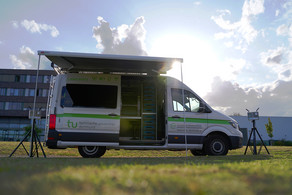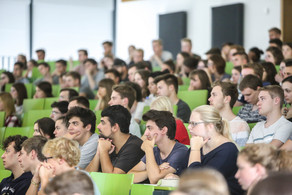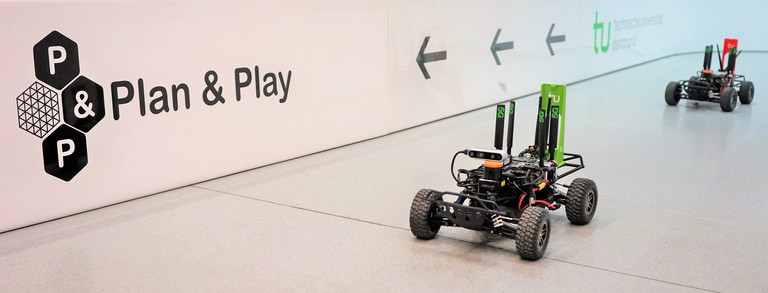Automatisierter Entwicklungsprozess für Kommunikationssysteme (AEK)
Termine
| Studiengang | Praktikum | Ort | ECTS |
|---|---|---|---|
| ET/IT & IKT | Mo 20.3.2023 bis Fr. 31.3.2023 täglich von 08:15 - 13.30 Uhr | Retina-Pool P1-01-108a | 3 |
| Wirt.-Ing. | Mo 20.3.2023 bis Fr. 06.4.2023 täglich von 08:15 - 13.30 Uhr | " | 5 |
Nächste Termine
| ET/IT & IKT | Mo. 4.9.2023 bis Fr. 15.9.2023 täglich von 08:15 - 13:30 Uhr | Retina-Pool P1-01-108a | 3 |
| Wirt.-Ing. | Mo. 4.9.2023 bis Fr. 22.9.2023 täglich von 08:15 - 13:30 Uhr | " | 5 |
Kurzbeschreibung
In diesem Praktium werden Sie mit Hilfe eines UML Werkzeuges UML State charts, d.h. Beschreibungen von endlichen Automaten entwickeln und damit eine Implementierung einer Problemlösung auf unterschiedlichen Plattformen erreichen.
Ihre erwarteten Erfolge
- Effektive Umsetzung komplexer Problemstellungen
- Nutzung der Werkzeuge zur Kommunikation im Team
- Erlernen von Methoden zur Sicherung hoher Produktqualität
Anmeldung
Bitte melden Sie sich frühzeitig für dieses Praktikum im LSF an, damit wir die passenden Plätze im Retina Pool P1-01-108a, reservieren können.
Formalrahmen
Blockpraktikum im zum Ende der vorlesungsfreien Zeit im Wintersemester 2019/2020
Die Veranstaltung ist in einzelne Arbeitsaufgaben gegliedert, die individuell zu bearbeiten und jeweils durch einen Abschlussbericht zu dokumentieren sind. Es findet ein Eingengstest statt, mit dem die grundsätzlich notwendigen Fertigkeiten und Kompetenzen überprüft werden.
Spezifika für B.Sc. Wirt-Ing.
Bitte beachten Sie folgende Rahmenbedingungen:
- Der Eingangstest zu Beginn des Praktikums in Bezug auf Ihre Programmierkenntnisse MUSS erfolgreich absolviert werden. Andernfalls gilt das Praktikum als nicht erfolgreich abgeschlossen und eine weitere Teilnahme ist in diesem Durchlauf nicht mehr möglich.
- Für das erfolgreiche Bestehen des Praktikums ist es notwendig, eine Mindestanzahl von erfolgreich beartbeiteten Aufgaben zu sammeln. Diese Mindestanzahl wird zu Beginn des Praktikums bekanntgegeben.
- Dieses Praktikum ist ein Prüfungsbestandteil im Rahmen Ihres Studiums. Bei Misserfolg MUSS es wiederholt werden. Maximal 3 Versuche sind laut der Prüfungsordnung möglich.
Eingangstest
In der verwendeten Programmierumbegebung (ein Eclipse-Derivat) ist eine erstes Projekt anzulegen, die gewünschte Funktion umzusetzen. Der Maschinencode ist danach auf das Experimentiersystem zu laden und zu debuggen.
Hierzu werden individuelle Programmieraufgaben verteilt, die mit Hilfe der beigefügten Dokumentation selbsständig zu lösen sind. Die gewünschte Funktion ist jeweils nachzuweisen.
Voraussetzungen
- Grundlagen der Programmierung
- solide C/C++ Kenntnisse
Sie sollten in der Lage sein, selbstständig mit Eclipse zu arbeiten und eigenen Quelltexte zu erstellen, compilieren und auszuführen. Dies ist zur erfolgreichen Teilnahme und dem Absolvieren der Aufgaben im Praktikum unabdingbar. Eine gute Voraussetzung ist z.B. durch das Bestehen des DAP Praktikums gegeben.
Downloads
Literatur
- Schürr, UML 2 für Studenten
- M. Fowler, UML konzentriert
- M.Hitz et.al, UML@work, Objektorientierte Modellierung mit UML 2





